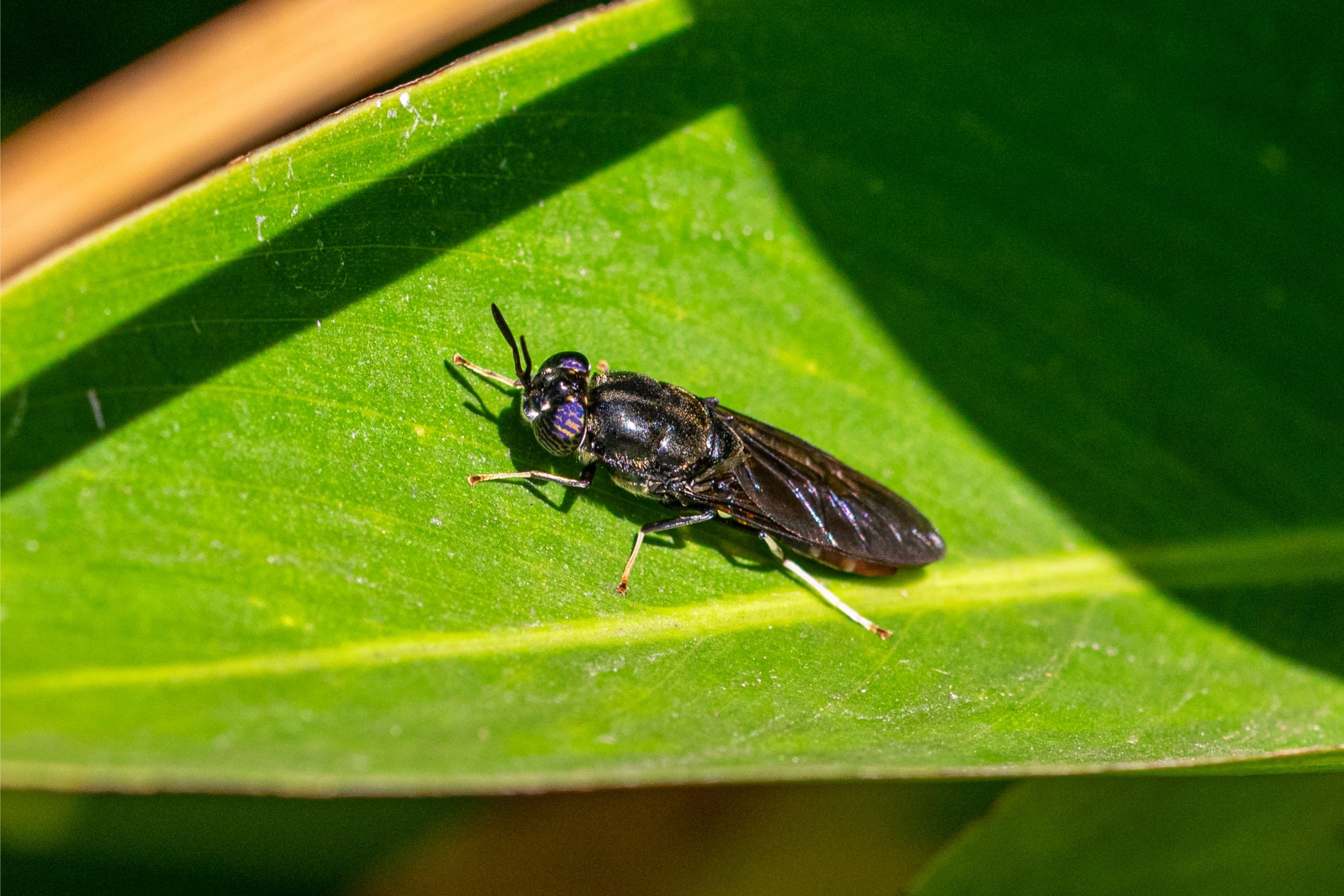Black soldier fly
(Hermetia illucens)

Description
Hermetia illucens, the black soldier fly, is a common and widespread fly of the family Stratiomyidae. The adults of H. illucens measure about 16 millimetres (5⁄8 in) long. These medium-sized flies have a predominantly black body, with metallic reflections ranging from blue to green on the thorax and sometimes with a reddish end of the abdomen. The second abdominal tergite has translucent areas, from which the specific Latin epithet derives. The head is wide, with very developed eyes. The antennae are about twice the length of the head. The legs are black with whitish tarsi. The wings are membranous; in the resting time, they are folded horizontally on the abdomen and overlapped. H. illucens is a mimic fly, very close in size, color, and appearance to the organ pipe mud dauber wasp and its relatives. The mimicry of this particular kind of wasp is especially enhanced in that the fly's antennae are elongated and wasp-like, the fly's hind tarsi are pale, as are the wasp's, and the fly has two small transparent "windows" in the basal abdominal segments that make the fly appear to have a narrow "wasp waist".Black soldier fly larvae can be differentiated from blowfly or housefly larvae by a thin gray-black stripe on their posterior ends. This species is native to the Neotropical realm, but in recent decades has spread across all continents, becoming virtually cosmopolitan. It is present in most of the United States and Europe, including the Iberian Peninsula, southern France, Italy, Croatia, Malta, the Canary Islands, and Switzerland, on the Black Sea coast of Russia in the Krasnodar Territory. It can also be found in the Afrotropical realm, the Australasian realm, the east Palaearctic realm, the Nearctic realm, North Africa, Southern Africa, and the Indomalayan realm. An adult female lays between 206 and 639 eggs at a time. These eggs are typically deposited in crevices or on surfaces above or adjacent to decaying matter such as manure or compost and hatch in about 4 days.Freshly emerged larvae are 1.0 millimetre (0.04 in), being able to reach a length of 25 millimetres (1 in) and weight of 0.10 to 0.22 grams (1.5 to 3.4 gr) by the end of larval stage.
Taxonomic tree:







